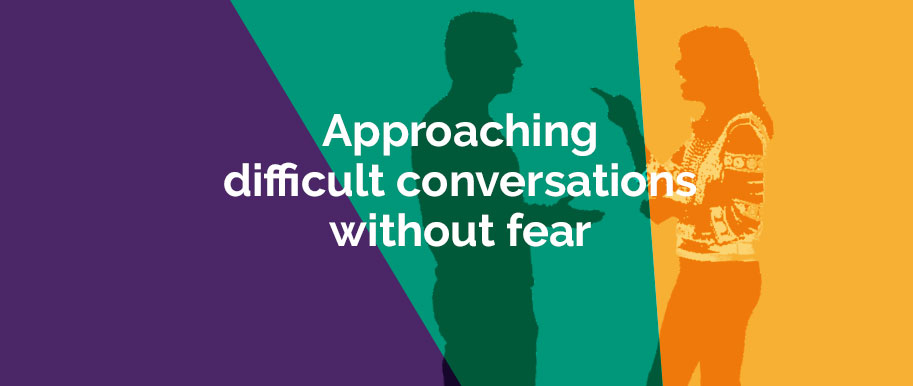Nobody likes to have a difficult conversation, especially not with members of your own team. It’s awkward, uncomfortable and makes you feel like the baddie. Yet if you’re a leader, one thing is sure: at some point, you’ll have to sit down with a colleague or staff member and have a difficult conversation. Not wanting to feel uncomfortable, leaders avoid the situation and putting these conversations off becomes a persistent modus operandi.
Thankfully, it doesn’t have to be this way.
Make the frightening thing an everyday occurrence: have a conversation
Telling someone off is a one-way street. The fastest way to ease anxiety about a challenging discussion is to think of it for what it is: a conversation. We hold conversations every day and dialogue that goes both ways feels much less scary than simply pointing out someone’s faults.
Curiosity fosters collaboration
When you approach a difficult conversation with curiosity, the fear factor reduces significantly. It’s hard to rattle through a long list of things to improve when you’re curious. Instead, you’re exploring where someone is coming from and what is driving their behaviour. Feeling that you’re on a fact-finding mission is far more comfortable than feeling that you’re passing judgement or handing down a punitive sentence.
The outcome of curiosity is collaboration. Genuine curiosity invites an open, frank response rather than defensive posturing or heated remarks. Talking through an issue to find a clear path that is beneficial for all, makes the conversation feel a lot less scary.
Benefits of collaboration
- Deal with negative behaviours sooner – Fear means difficult conversations are postponed. Without fear, they can happen sooner and issues are less likely to become problematic.
- Conversations are more productive – Curiosity helps put both parties at ease. The dialogues take a more natural course and the outcome is more likely to be beneficial to all involved.
- Working relationships improve – Taking an interest in the people around you helps to improve relationships. As understanding increases relationships become more effective.
- Teams are more engaged and innovative – Fear leads to a heavy-handed approach: rules and regulations prevail and people fear punishment. Removing fear kick-starts productivity as people realise they can experiment and innovate and not be punished for failing.
- Organisational culture becomes more positive and supportive – Removing the fear from difficult conversations has a positive effect as openness and curiosity start to trickle through the rest of the organisation.
Difficult conversations are intimidating; when we re-frame our thinking we remove the fear. It might feel a long way away, but by encouraging a more open, positive, and curious mindset, fear begins to disappear from other situations too. And while fear itself will never be removed completely, knowing how to deal with it empowers leaders, staff, and benefits the whole organisation.
Dealing with the inevitable
Whether at work or home, whether you’re a leader or a supporting team member, everyone has to have an uncomfortable conversation at some point. Feeling equipped to approach it positively is the difference between not being able to think or speak clearly versus a cool head and an open mind. Being interested in what your colleague has to say sets the conversation on a positive track. Not only does it feel like a weight off your shoulders, a calmer outlook will produce better results – maybe even better than you expected!
Our blog, ‘How to remove the fear from difficult conversations’, looks at practical ways to remove fear from difficult conversations, to enable healthier relationships and create an organisation that’s robust and thriving.
